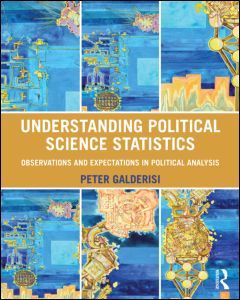Description
Understanding Political Science Statistics
Observations and Expectations in Political Analysis
Author: Galderisi Peter
Language: English
Subjects for Understanding Political Science Statistics:
Keywords
Randomly Draw; random; Voting Turnout; draw; Understanding Political Science Statistics; Single Member Districting; hypothesis; Central Tendency; confidence; Linear Regression; interval; Deviation Scores; standard; Unstandardized Coefficients; deviation; Feeling Thermometer; score; Modal Category; modal; Null Hypothesis; Confidence Interval; Standard Deviation; Ane; Spurious Relationship; Dummy Variable; Statistical Independence; Pe Rc; Unique Pairings; Bimodal Symmetrical Distribution; Partisan Gerrymander; Perfect Association; Standardized Slope; Presidential Support Scores; Ecological Fallacy
Approximative price 105.47 €
In Print (Delivery period: 14 days).
Add to cartPublication date: 04-2015
· 19x23.8 cm · Paperback
Approximative price 208.65 €
In Print (Delivery period: 14 days).
Add to cartPublication date: 10-2015
· 19x23.8 cm · Hardback
Description
/li>Contents
/li>Biography
/li>
In politics, you begin by asking theoretically interesting questions. Sometimes statistics can help answer those questions. When it comes to applied statistics, students shouldn?t just learn a vast array of formula?they need to learn the basic concepts of statistics as solutions to particular problems. Peter Galderisi demonstrates that statistics are a summary of how to answer the problem: learn the math but only after learning the concepts and methodological considerations that give it context.
With this as a starting point, Understanding Political Science Statistics asks students to consider how to address a research problem conceptually before being led to the appropriate formula. Throughout, Galderisi looks at problems through a lens of "observations and expectations," which can be applied to myriad statistical techniques, both descriptive and inferential. This approach links the answers researchers get from their individual data analysis to the research designs and questions from which these analyses are derived.
By emphasizing the underlying logic of statistical analysis for greater understanding and drawing on applications and examples from political science (including law), the book illustrates how students can apply statistical concepts and techniques in their own research, in future coursework, and simply as an informed consumer of numbers in public discourse.
The following features help students master the material:
Legal and Methodological sidebars highlight key concepts and provide applied examples on law, politics, and methodology;
- End-of-chapter exercises allow students to test their mastery of the basic concepts and techniques along the way;
- A Sample Solutions Guide provides worked-out answers for odd-numbered exercises, with all answers available in the Instructor?s Manual;
- Key Terms are helpfully called out in both Marginal Definitions and a Glossary;
- A Companion Website (www.routledge.com/cw/galderisi) with further resources for both students and instructors;
- A diverse array of data sets include subsets of the ANES and Eurobarometer surveys; CCES; US Congressional district data; and a cross-national dataset with political, economic, and demographic variables; and
- Companion guides to SPSS and Stata walk students through the procedures for analysis and provide exercises that go hand-in-hand with online data sets.
1. Political Science, the Scientific Method, and Statistical Analysis: An Overview
2. How Do We Measure and Observe?
3. Central Tendency as Summary Observation
4. Dispersion, Variation, Goodness of Fit as Summary Observation
5. Standardized Scores and Normal Distributions: The Concept of Relative Observation
6. An Intuitive Introduction to Inference and Hypothesis Testing
7. Hypothesis Testing and the Concept of ASsociation: Observations and Expectatiosn about the Difference between Two Means
8. Inferential Statistics for Proportions
9. Measuring Association for Nominal and Ordinal Data
10. Research Design and the Use of Control Variables
11. Different by How Much? Linear Regression
12. Retracing Our Steps: Hypotheses, Multiple Regression, and the EFfects of Third Variables
Peter Galderisi has taught political science methods and statistics for more than three decades, and is currently a lecturer and local internship director in the Political Science Department at the University of California, San Diego. Previously, Galderisi was a Professor or Visiting Professor at Utah State, UCLA, UC Santa Cruz, and Cal State Fullerton. He specializes in U.S. political parties, campaigns and elections, American political development, interest groups, and election law.




